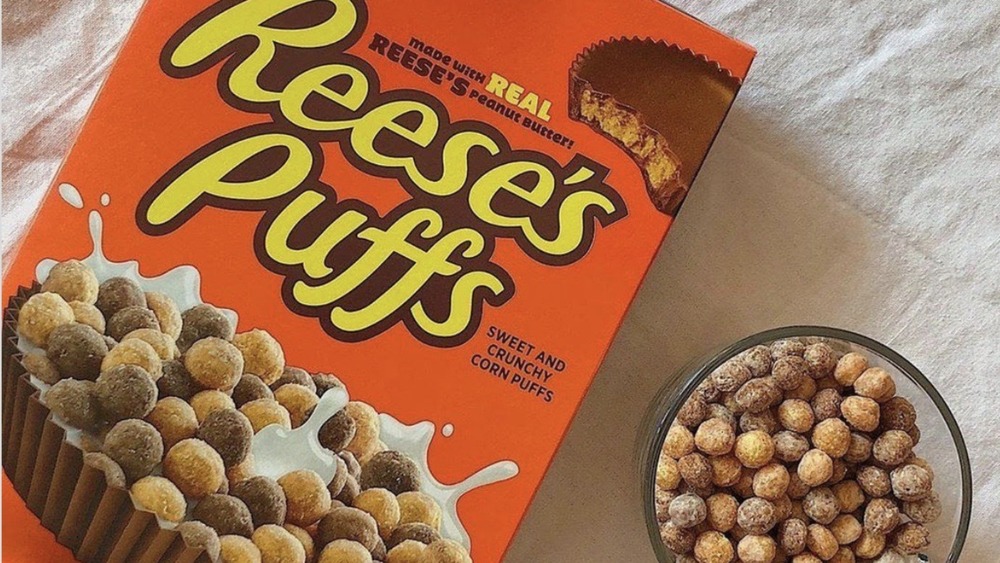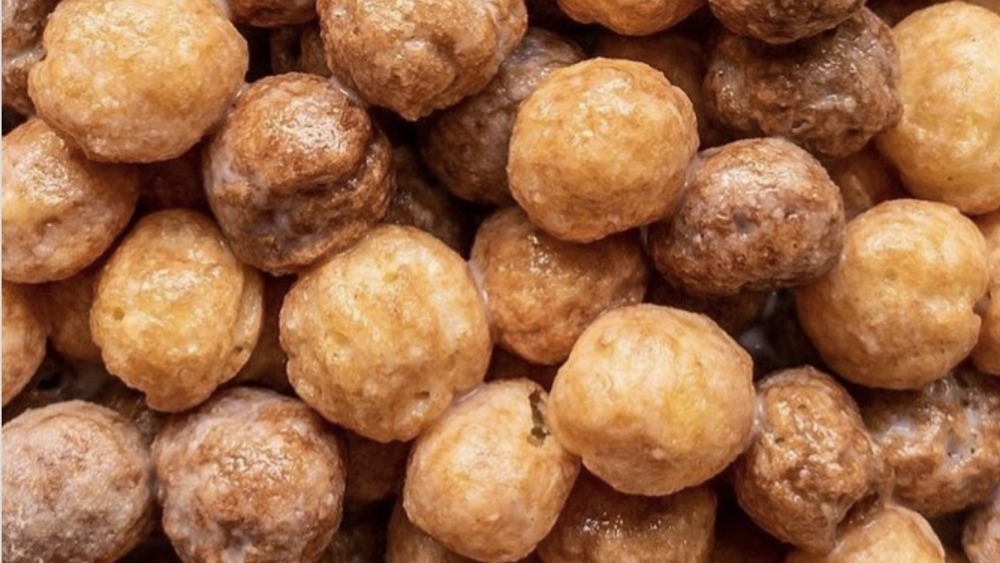You Should Think Twice About Eating Reese's Puffs. Here's Why
When Reese's Puffs first hit grocery store shelves back in 1994, kids — and adults, if we are being honest — everywhere were thrilled. Finally! A perfectly acceptable way to essentially eat candy for breakfast. After all, as the name implies, the cereal is made to taste just like one of the most popular candies in America: Reese's peanut butter cups. Similar in texture to a classic corn puff cereal, Reese's Puffs are tiny, crunchy, brown and tan spheres that provide a sinfully sweet burst of chocolate and peanut butter flavor in your mouth. (Even better? They turn your cereal milk into the richest cocoa beverage!)
While there's no denying Reese's Puffs are delicious, they are not exactly what most would call a nutritious breakfast. You probably knew that the chocolatey cereal was not the healthiest thing in the world, but you probably did not realize just what effect it could have on your body. Here's what to know before you pour yourself some tomorrow morning.
It's a hit of straight sugar
If eating what tastes like a bowl of Reese's peanut butter cups sounds too good to be true, that's because, sadly, it is. Just like the candy that the cereal is named after, Reese's Puffs are very high in sugar, with 13 grams per 1 cup serving. According to Eat This, Not That, that means that 33 percent of your cereal's calories are coming from sugar alone. Yikes, that's a lot! And consuming too much sugar over time can lead to all sorts of different health problems, Healthline cautions — from diabetes to weight gain, and even obesity.
But that's not all. Eat This, Not That also reports that Reese's Puffs contain artificial colors and flavors. Two of those — Yellow No. 5 and Yellow No.6 — have been found to potentially increase the risk of children developing attention deficit disorder (ADD) and are actually banned in some European countries for that exact reason. If this has become your go-to cereal, perhaps it's time to find some alternative breakfast options.

